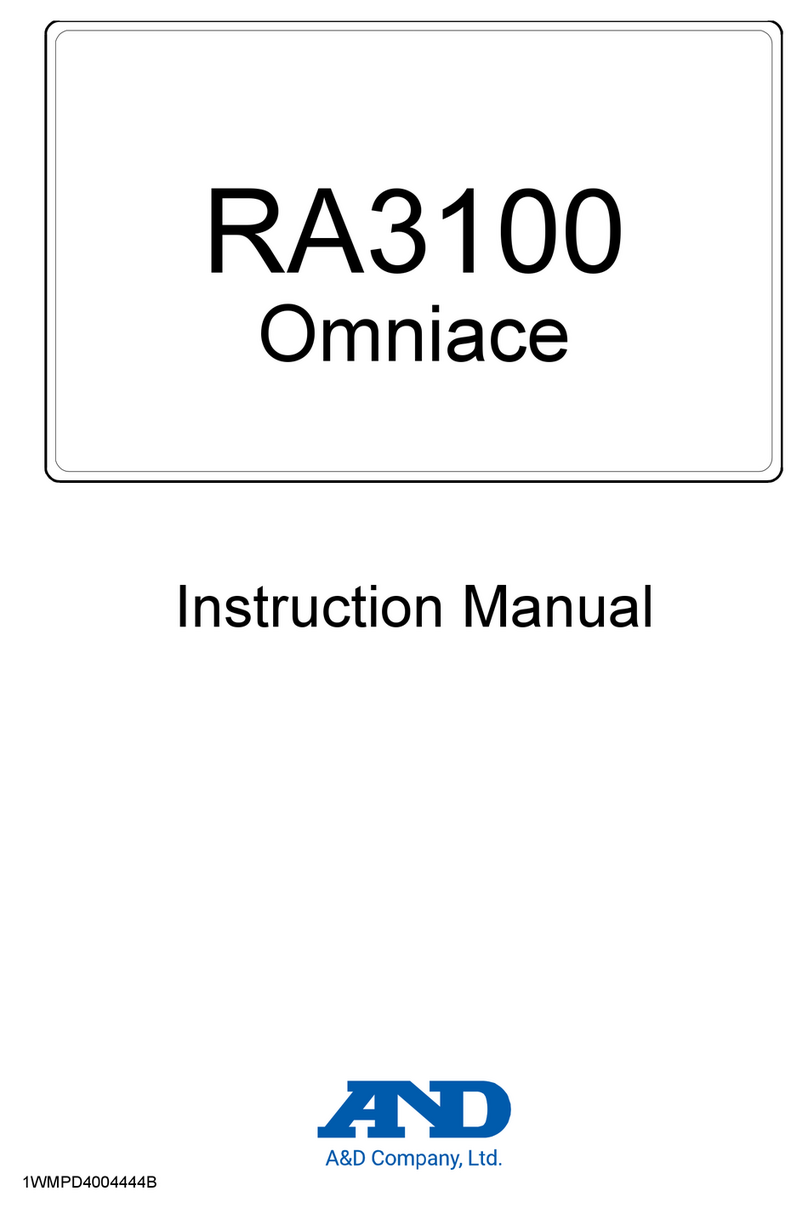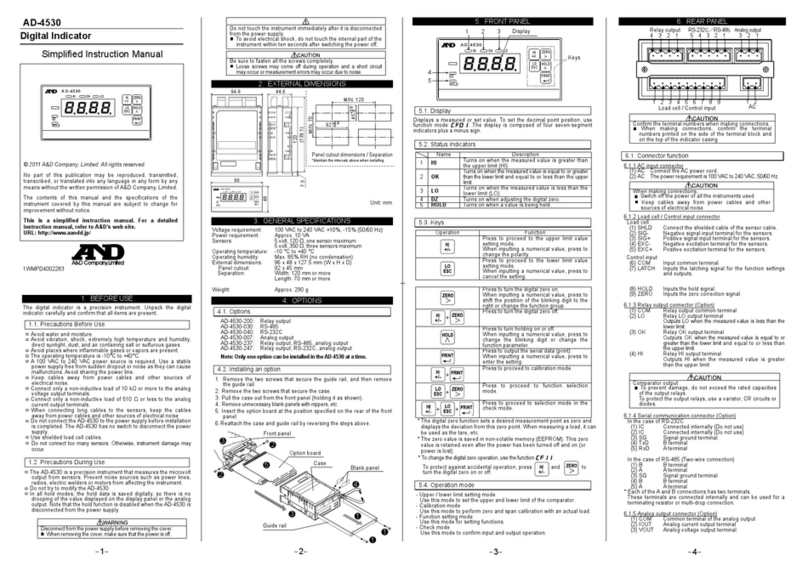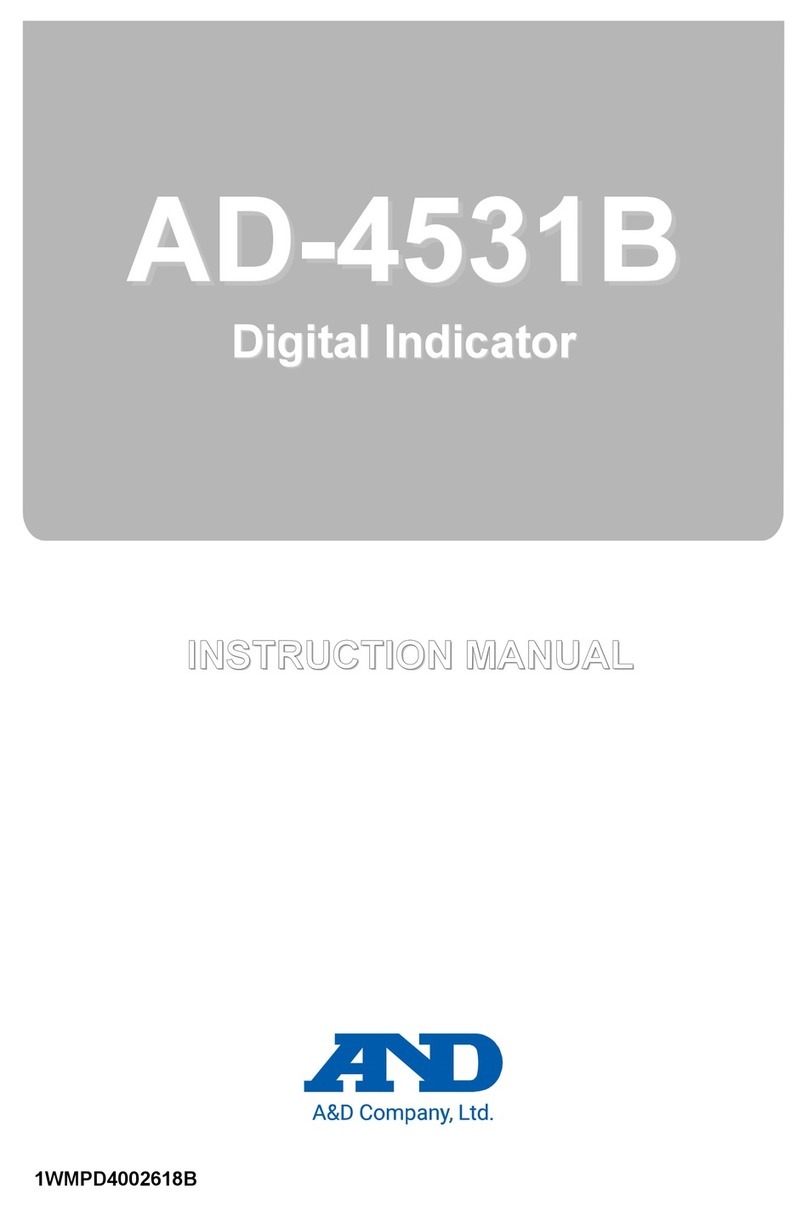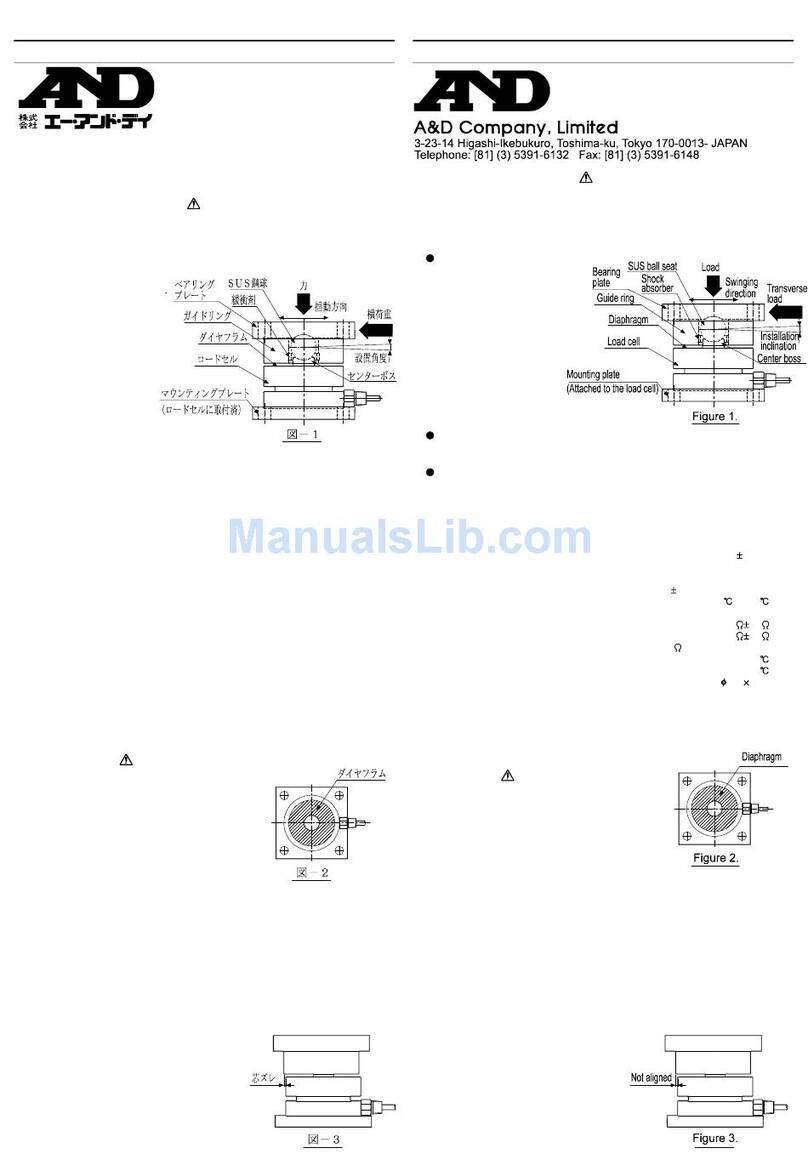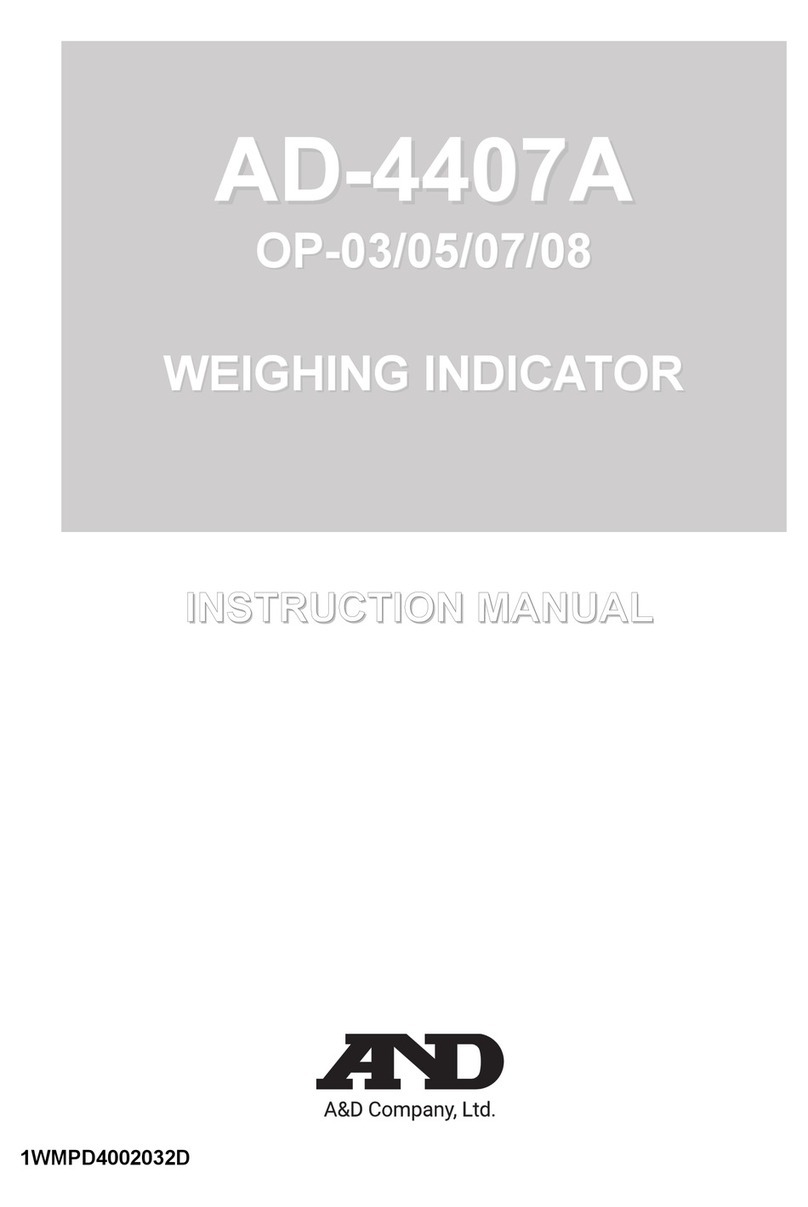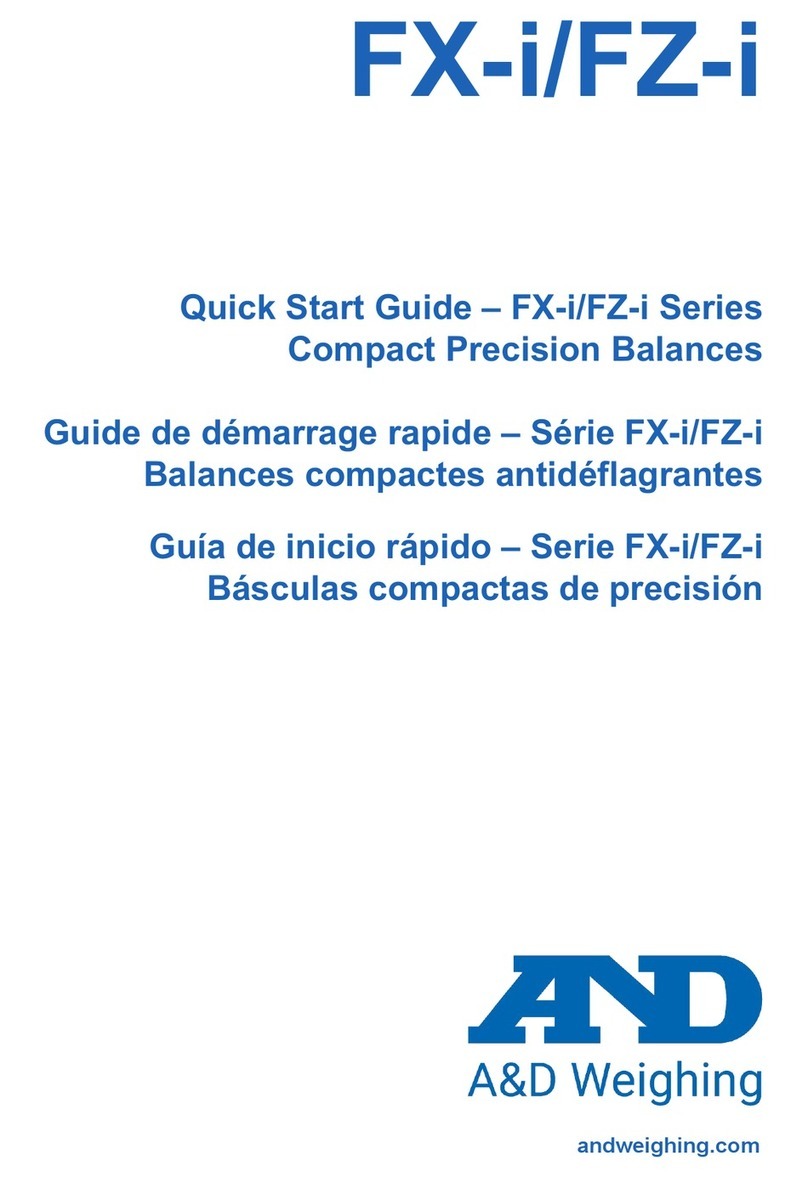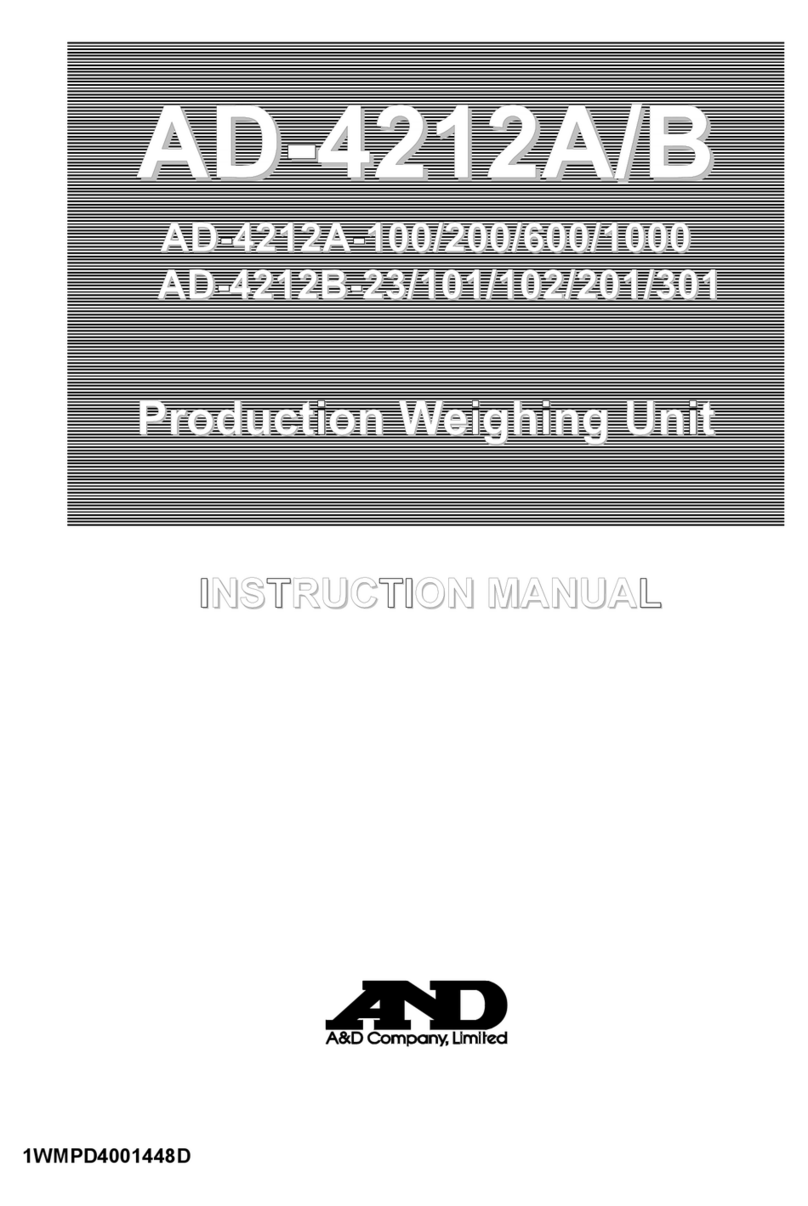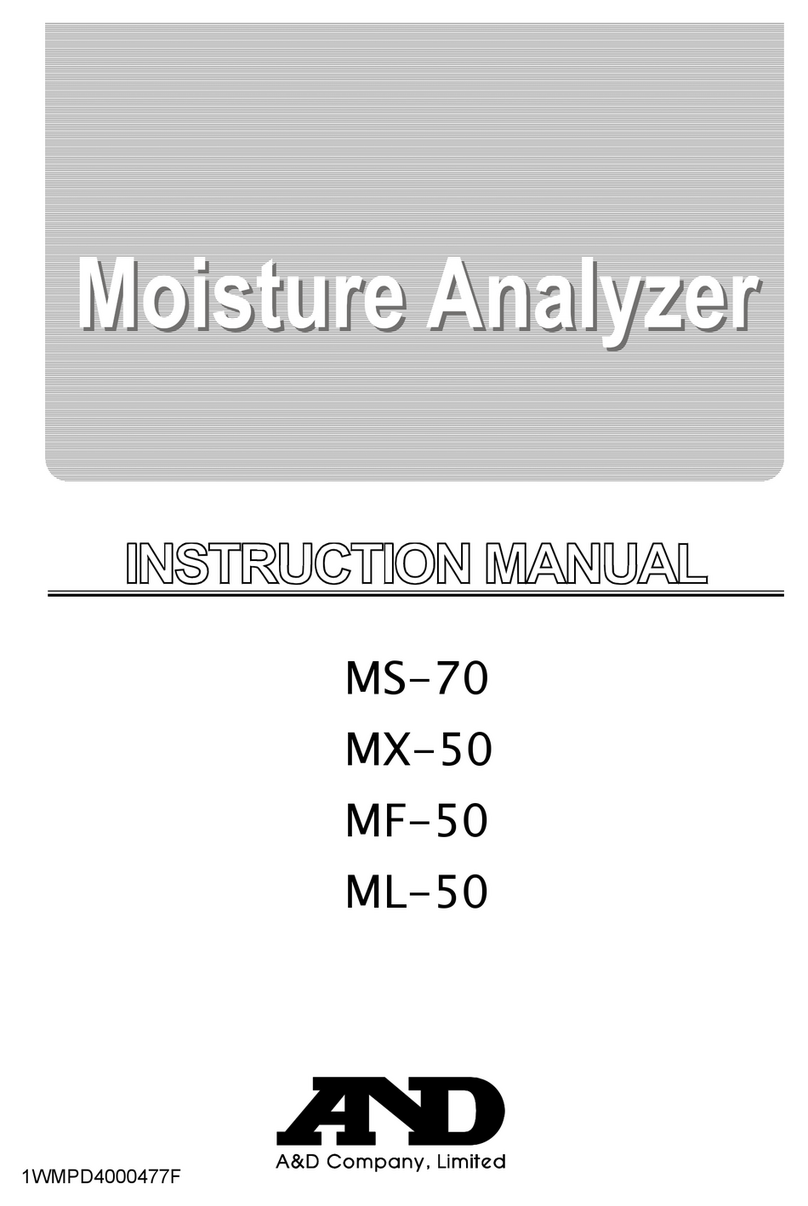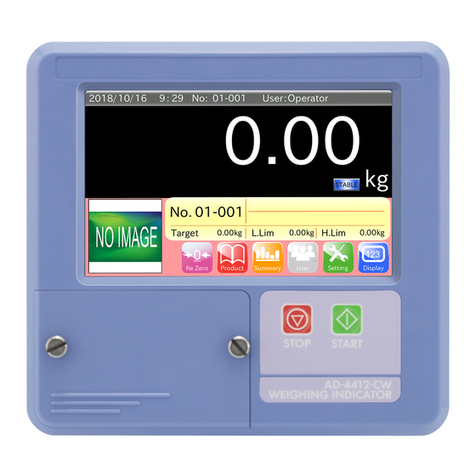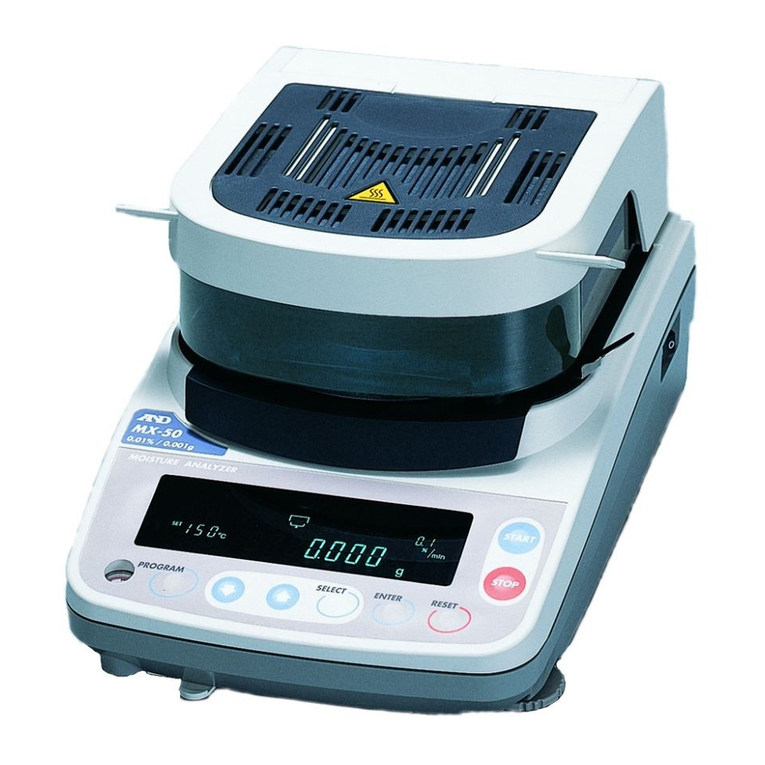1
SAFETY PRECAUTIONS
All safety messages are identified by the following, "WARNING" or
"CAUTION", of ANSI Z535.4 (American National Standard Institute: Product Safety
Signs and Labels). The meanings are as follows:
This manual is subject to change without notice at any time to improve the product.
Product specifications are subject to change without any obligation on
the part of the manufacturer.
When using the AD-1611, the following safety precautions should
always be observed.
CAUTION
Do not disassemble the AD-1611. Disassembling may cause damage to
the AD-1611. Damage caused by disassembling will not be covered by
the warranty. Contact your local A&D dealer if the AD-1611 needs
service or repair.
If a problem has occurred and you cannot resolve it, stop using the
AD-1611.
PRECAUTIONS FOR USE
AD-1611 main body
The AD-1611 is not explosion-proof or waterproof. Do not place it where
there is a risk of explosion or where it may get wet.
When the optical port is not used or the AD-1611 is stored, attach the
protective cap provided to the port. Otherwise, dust may enter the
connector in the optical port and cause a communication error.
Power supply
Power is supplied to the AD-1611 by the accessory AC adapter or by a
personal computer (PC) connected using the accessory USB cable.
When the USB cable is used for communication, power is supplied by a
PC. Only a PC can be connected to the USB port. Do not connect other
devices to the USB port nor take power from an outside source.
When an RS-232C cable is used for communication, use the AC
adapter to supply power.
WARNING A potentially hazardous situation which, if not
avoided, could result in death or serious injury.
CAUTION A potentially hazardous situation which, if not
avoided, may result in minor or moderate injury.












